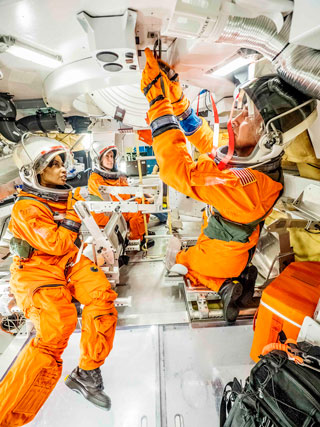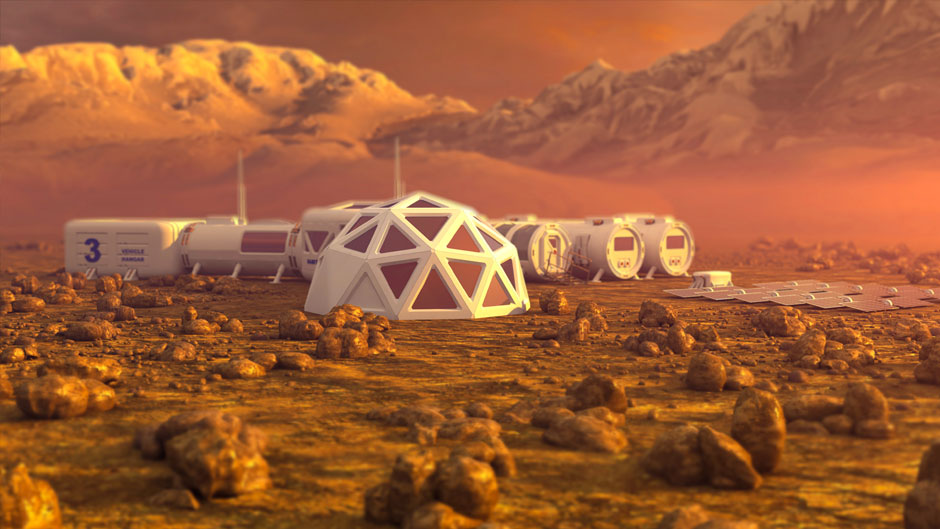Three years had passed since the group of interstellar explorers journeyed thousands of light years to Omicron Ceti 3 in the far reaches of the Milky Way, hoping to establish a colony there.
Had they perished? Or did they find a way to protect themselves from the deadly form of radiation called Berthold rays that was bombarding the planet? No one knew.
So on stardate 3417.4, Captain James T. Kirk and five crewmembers of the starship Enterprise beamed down to the planet surface to find out. Their discovery: The colonists were not only alive but thriving. Spores from Omicron Ceti 3’s plant life had protected them from the lethal Berthold rays.
Science fiction? Of course. From an episode of Star Trek: The Original Series, to be precise.

But for University of Miami researcher and diehard Trekkie Victoria Coverstone, the challenge of protecting future colonists from dangerous levels of radiation on Mars couldn’t be more real. It is problem that requires a much more sophisticated solution than make-believe plant spores. The answer, says Coverstone, lies in what is left of Mars’s original magnetic field.
Like Earth does now, the Red Planet once had a strong magnetic field that protected it from the full brunt of solar and cosmic radiation. “But about four billion years ago, Mars lost its magnetic field when its iron core cooled, and solar winds have been stripping away the Martian atmosphere ever since,” explained Coverstone, professor and chair of mechanical and aerospace engineering in the College of Engineering.
Traces of the Red Planet’s magnetic field remain, however. By using loops made of superconductors (metals that allow electrical current to flow unimpeded if cooled below a certain temperature), Coverstone hopes to enhance those remnants to generate a localized magnetic field on Mars equivalent to that of Earth’s.
For now, she is using computer simulations to test her theory. But eventually, she would like to test a small version of her magnetic shield under a proton therapy or electron machine.
“The radiation shields would be a modular design that would be a part of the spaceship during the cruise phase and should be able to be easily removed and placed accordingly by humans or autonomous robots,” said Coverstone.
Funded by the Defense Advanced Research Projects Agency, an arm of the U.S. Department of Defense, her project is a prelude to a manned mission to Mars, a voyage that, when ultimately undertaken, will be fraught with all sorts of risks—radiation exposure being one of the biggest.
A two-year roundtrip mission—NASA envisions six months flight time each way, plus about a year on the surface—would expose astronauts to radiation levels far above the space agency’s current guidelines.

So far, only NASA rovers have explored the Martian surface, collecting and sending back to Earth crucial data that is being used to help make a manned mission possible. The car-sized Curiosity, for example, which landed in Mars’s 96-mile-wide Gale crater in 2012, measured levels of cosmic radiation and solar energetic particles during both its journey to and exploration of the Red Planet. “This data is of critical importance for future radiation protection shield designs and simulations,” said Coverstone.
She has no doubt that humans will eventually reach and colonize the Red Planet, perhaps some time in the 2040s. “It’s just a matter of time,” she said. “I’m disappointed that we’re still stuck in low-earth orbit and are still only talking about going to Mars. But it is a hard problem to lick. To do it, knowing that there is a high probability that lives will be lost, takes a lot of planning.”
Captivated by Star Trek as a little girl, Coverstone dreamed of becoming an astronaut. “It was visually stimulating, and the storylines were interesting,” she said of the science fiction television series created by Gene Roddenberry, calling it “ahead of its time.”
When Coverstone started applying to colleges, she didn’t even know about the field of aerospace engineering. During her first year at the University of Illinois at Urbana–Champaign, she took a slew of math courses, thinking she would become an accountant one day. But a canoe trip with a fellow student changed her career path for good.
“He told me a little bit about the field, and that led me to talk with an advisor. They told me about aerospace engineering, and it was a slam-dunk from there,” she recalled. “I said to myself, ‘If I have to study, I’m going to study so that I can cruise around the galaxy with James T. Kirk.’ ”
Coverstone eventually applied to become a NASA astronaut, making it to the final cut before being disqualified because of a flaw in her visual depth perception. But she never thinks about what might have been. After all, she figures, she might not ever have become a researcher working on a way to protect astronauts from radiation on Mars.
Is the risk involved in going to the Red Planet worth it?
“Absolutely,” Coverstone said emphatically. “Why did we go to the North Pole? Why did we go to the South Pole? Why did we climb Mount Everest? It’s something in our DNA that forces us to do these extreme things. It’s part of the human spirit.”

